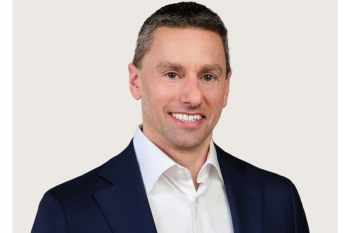
Understanding Patient Needs to Achieve Successful Endometriosis Management
Expert panelists navigate patient needs and describe how to achieve successful endometriosis management from a patient perspective.
This presentation is brought to you by Myovant Sciences.
Tara Hilton: One thing that we’ve done to better that relationship with community members and their doctors is we’ve created a toolkit. This is a list of factual and to-the-point questions to be prepared with when you see the doctor for the first time. Newer patients with endometriosis don’t know what questions to have ready for the doctor after surgery, so for the person who goes with you, we have a list of questions to ask, such as, “What does aftercare look like?” The more that we can arm them with tools to go in and questions about things like treatment plans, paths, and expectations, the more productive it makes that meeting. It makes a path after surgery care if they get there.
Then you have to have communication with your doctor. If you have surgery and you still aren’t out of pain or you’re back in pain 2 or 3 months later, then what? You have those conversations. But it’s helpful to use the tools that are in our community and support group. We make sure we say, “If more of your symptoms are interstitial cystitis, talk to your doctor. Maybe there’s a urologist that they pair with to treat it.” [It’s helpful to have] a group approach and to arm them with a toolkit of questions and things to think about, such as symptoms that are common and aren’t common, so you can start to put things together and go in there and lay the whole story out all at once instead of repeated visits.
We also provide a lot of support working with insurance companies and payers. Maybe there’s a billing code that’s being used incorrectly. Is there an appeal process? As Dr Surrey was saying, a lot of times, it’s getting someone from the doctor’s office to take time to write that letter of why you could jump straight to this and all the history that’s there. We have advocates that have been there and done that, who try to be resourceful and have the most straightforward path and bring down that timeline of diagnosis and go through all the various treatments. Arming ourselves with tools and questions and lists is the most powerful way to be productive.
Maria Lopes, MD, MS: Absolutely. As a payer, I’ll also add that the letters and appeals are also work for the payer side, sometimes only to overturn the decision once you get the correct information. One thing that also helps is a reconsideration or peer to peer. The peer to peer is when someone like Dr Surrey wants to get on the phone with a clinician, hopefully an ob-gyn [obstetrician-gynecologist], who can understand the merits of the case and understand the patient’s symptoms, the severity, and what that journey has been like [so it can be avoided]. Sometimes it’s simply a lack of information, that somebody didn’t fill it out correctly. But that can bypass a lot of that paperwork back and forth and the frustration for patients and clinicians and waste less time.
Amber, let me bring you into the fold. In your practice, how do you facilitate this approach to shared decision-making with your members who have endometriosis? Are the things that Tara and Dr Surrey mentioned helpful? Do you use them?
Amber Hagen, NP: Very much so. As Dr Surrey was saying, ask the patient their goal. That’s huge. Because you can assume someone with endometriosis has pelvic pain, but how bad is that? You ask them with that scale of 1 to 10, which is pretty generic because a 10 is different for every person. Ask them what their goal is. Is it the daily pelvic pain? Is it the pain with intercourse? Is it the heavy bleeding? Is it the infertility? Do they want to get pregnant or do they want to treat the pain and then get pregnant right after? What are their long-term goals? What are their short-term goals?
Be open with your patients. I have suffered from endometriosis as well. I always share that with my patients to help them feel more comfortable so they can feel more comfortable sharing how they’re feeling, what their goals are, and where we want to get with our treatment. If we want to be more conservative, do they want to take that more holistic approach, as Tara was saying? Or do we want to be more aggressive because they’re sick and tired of dealing with this? I aim for open communication with my patients and allow them to bring to me what they want, instead of saying, “These are the checkboxes. This is what we have to do and what we’re doing.” That doesn’t get us or the patients far.
Transcript edited for clarity.
Newsletter
Stay ahead of policy, cost, and value—subscribe to AJMC for expert insights at the intersection of clinical care and health economics.



































